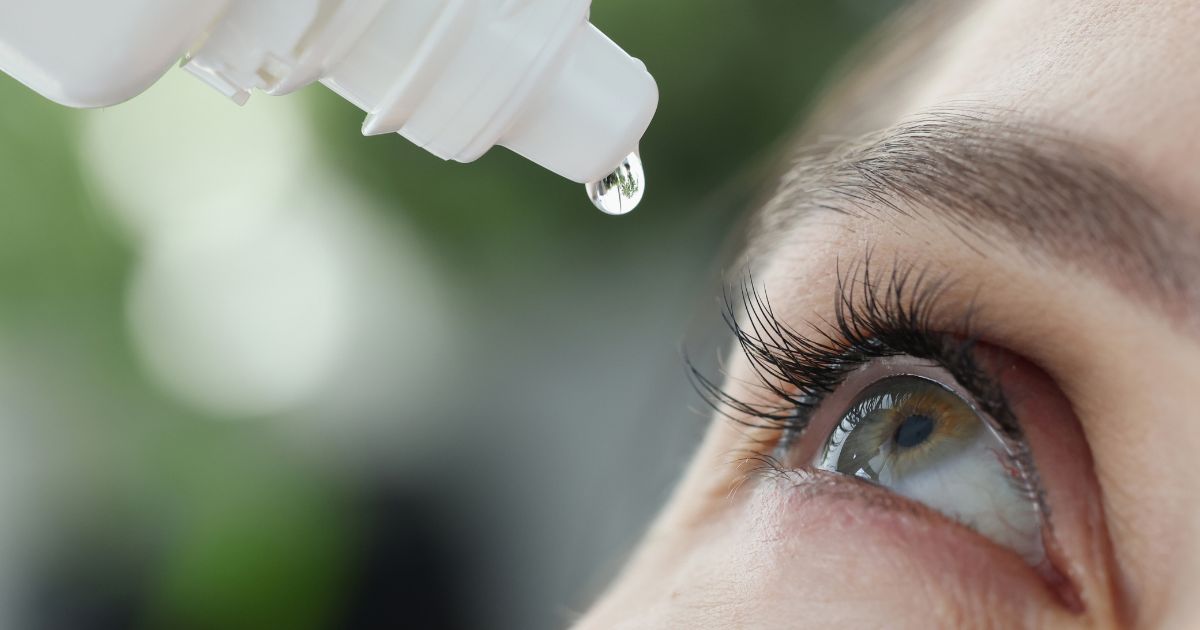You have red eyes and they're watery? You might have conjunctivitis. This inflammation is a common eye condition that can affect people of all ages. While this condition can be uncomfortable and disruptive, with sufficient knowledge and care, it can be managed. In this article, we'll look at everything you need to know about conjunctivitis, including its symptoms, causes, treatment, and prevention.

What is Conjunctivitis?
Conjunctivitis is an eye condition that can affect both children and adults. It involves inflammation of the conjunctiva — the thin membrane that covers the eyeball, medically known as conjunctivitis. The inflammation can affect one eye or both eyes.
Symptoms and Causes of Conjunctivitis
Conjunctivitis, also known as pink eye can be of viral or bacterial origin. It can also be non-infectious or caused by allergies.
Depending on the cause of the inflammation, specific symptoms may vary, but conjunctivitis generally presents with eye redness, tearing, itching, burning, sensation of something in the eye, or light sensitivity.

Tip: Read on the blog, how to recognize allergy - symptoms and manifestations.
Infectious Conjunctivitis
Viral and bacterial inflammations are caused by direct contact with an infected person, such as shaking hands and then rubbing your eyes, using someone else's towel or eye drops, and so on.
Viral Conjunctivitis
Viral conjunctivitis is caused by adenoviruses or herpes and presents with:
- eye redness,
- secretion,
- eye burning,
- feeling of a foreign body in the eye,
- light sensitivity.
Bacterial Conjunctivitis
Bacterial infections such as streptococcus or staphylococcus are responsible for bacterial conjunctivitis, which presents with:
- eye redness,
- fever,
- pus discharge,
- eyelid swelling.
Allergic Conjunctivitis
Allergic conjunctivitis usually occurs in the early spring and summer, during the pollen season. Allergy-induced conjunctivitis presents with:
- itchy eyes and eyelids,
- tearing,
- conjunctival redness.
Non-Infectious Conjunctivitis
Non-infectious conjunctivitis is usually caused by external factors such as dust, smoke, or chlorine. Its symptoms include:
- eye redness,
- reduced tear production.
Giant Papillary Conjunctivitis
This inflammation occurs due to wearing contact lenses, where unnatural material presses on the eye. The inflammation can be caused by wearing contact lenses, prolonged wear, and inadequate contact lens hygiene.
Conjunctivitis Treatment
Treatment for conjunctivitis varies depending on the cause of the inflammation. However, conjunctivitis is generally treated with ophthalmic drops, gels, and ointments. Irritated eyes can also be soothed with compresses, sunglasses, herbal rinses, or tea.

Tip: Eye Drops: how to choose and what they are suitable for? Read on the blog.
Bacterial conjunctivitis is specifically treated with antibiotic drops or ointments, antiviral medications help with viral infections, and allergic conjunctivitis can be relieved with antihistamines.
During treatment, increased hygiene when touching around the eyes, rest, and darkness are important. However, specific instructions will surely be provided by an ophthalmologist.
Conjunctivitis in Children
Children are very susceptible to conjunctivitis, and if the inflammation is not properly treated, it can lead to permanent damage to the child's eyesight. Therefore, always consult a doctor.
Bacterial conjunctivitis often occurs in newborns. Rinsing the eyes of newborns with boric acid as soon as possible after birth reduces the risk of inflammation.
Tip: How to recognize and deal with allergies in children and infants? Learn on the blog.
Prevention of Conjunctivitis
Wondering how to prevent conjunctivitis? For prevention, you can follow these principles:
- avoid unnecessary touching and rubbing of the eyes,
- use your own hygienic supplies and towel,
- if you wear contact lenses, wear them only for the prescribed time and follow hygienic rules,
- do not borrow mascara or other cosmetics from others,
- avoid dusty and smoky places,
- if you regularly work on a computer, try to avoid screens for the rest of the day,
- wear sunglasses with strong UV protection,
- avoid overly air-conditioned spaces, you can use air humidifiers instead of air conditioning,
- when swimming in a pool, wear swimming goggles.
#produkty#https://www.nanospace.store/eye-drops/
Frequently Asked Questions
What are the main symptoms of conjunctivitis?
Conjunctivitis can be recognized by several main symptoms, such as eye redness, tearing, itching, irritation, and possibly pus discharge from the eyes.
How long does conjunctivitis treatment take?
The duration of treatment depends on the cause of conjunctivitis. Bacterial infection may require several days of antibiotics, while viral conjunctivitis may last longer.
Is conjunctivitis contagious?
Yes, some forms of conjunctivitis can be contagious. It is important to isolate yourself from others until you undergo treatment.
Can I wear contact lenses during conjunctivitis?
No, during conjunctivitis, you should not wear contact lenses, as it may worsen the condition of your eyes.
How can I prevent allergic conjunctivitis?
To prevent allergic conjunctivitis, try to avoid allergens such as pollen and dust, and take prescription allergy medications from your doctor.
Can conjunctivitis cause permanent eye damage?
Most cases of conjunctivitis are successfully treated without permanent consequences. However, in severe cases, permanent eye damage can occur if the treatment is not properly administered.
Sources
- ALFONSO, Susana A.; FAWLEY, Jonie D.; LU, Xiaoqin Alexa. Conjunctivitis. Primary Care: Clinics in Office Practice, 2015, 42.3: 325-345.
- AZARI, Amir A.; BARNEY, Neal P. Conjunctivitis: a systematic review of diagnosis and treatment. Jama, 2013, 310.16: 1721-1730.
- BIELORY, Leonard; FRIEDLAENDER, Mitchell H. Allergic conjunctivitis. Immunology and allergy clinics of North America, 2008, 28.1: 43-58.
- GIGLIOTTI, Francis, et al. Etiology of acute conjunctivitis in children. The Journal of pediatrics, 1981, 98.4: 531-536.
- AZARI, Amir A.; ARABI, Amir. Conjunctivitis: a systematic review. Journal of ophthalmic & vision research, 2020, 15.3: 372.

